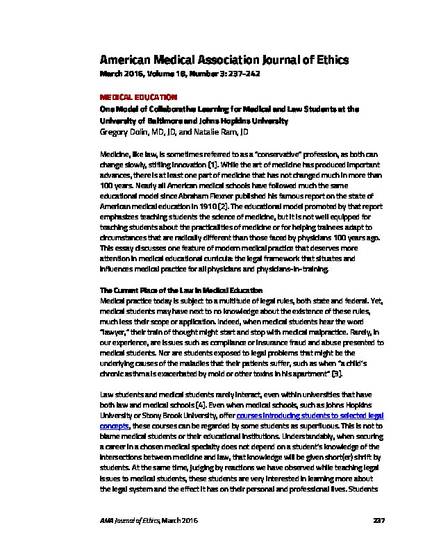
Medicine, like law, is sometimes referred to as a “conservative” profession, as both can change slowly, stifling innovation. While the art of medicine has produced important advances, there is at least one part of medicine that has not changed much in more than 100 years. Nearly all American medical schools have followed much the same educational model since Abraham Flexner published his famous report on the state of American medical education in 1910. The educational model promoted by that report emphasizes teaching students the science of medicine, but it is not well equipped for teaching students about the practicalities of medicine or for helping trainees adapt to circumstances that are radically different than those faced by physicians 100 years ago. This essay discusses one feature of modern medical practice that deserves more attention in medical educational curricula: the legal framework that situates and influences medical practice for all physicians and physicians-in-training.
Available at: http://works.bepress.com/gregory_dolin/30/
